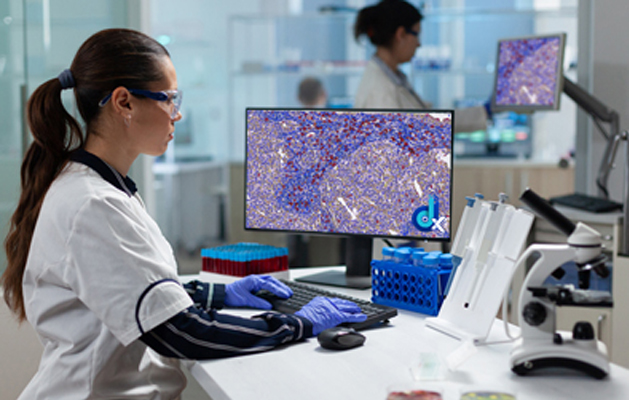Digital Pathology Technology
Welcome to our detailed exploration of digital pathology technology, a powerful innovation transforming diagnostic precision, workflow efficiency, and collaborative capabilities in pathology and healthcare.
What is Digital Pathology Technology?
Digital pathology technology encompasses advanced methods and equipment that digitize traditional glass pathology slides into high-resolution digital images. These images are then accessible through computer systems for viewing, analysis, and management, significantly enhancing diagnostic accuracy, efficiency, and collaboration among pathologists, clinicians, and researchers.
Key Technologies in Digital Pathology
Whole Slide Imaging (WSI)
Whole slide imaging involves capturing entire pathology slides at microscopic resolution, creating digital slides for comprehensive analysis. WSIs enable remote consultations, detailed evaluations, and easier archiving.
Image Analysis Software
Digital pathology employs advanced algorithms and artificial intelligence (AI)-driven software for automated detection, segmentation, and analysis of tissue structures and biomarkers, drastically improving the accuracy and consistency of pathological diagnoses.
Cloud-Based Platforms
Secure cloud storage and platforms provide seamless data accessibility and sharing, enabling collaboration between pathologists across institutions and geographical boundaries.
Integration with Laboratory Information Systems (LIS)
Digital pathology solutions integrate smoothly with existing laboratory information systems, streamlining data management, reporting, and workflow automation.
Benefits of Digital Pathology Technology
Benefits of Digital Pathology Technology:
- Enhanced Diagnostic Accuracy
AI and automated image analysis significantly reduce human error, improving diagnostic precision.
- Improved Efficiency
Faster workflows and rapid digital sharing accelerate diagnosis and treatment plans.
- Remote Collaboration
Enables real-time consultation and second opinions, even from remote locations.
- Educational and Training Advantages
Facilitates accessible training materials and case studies for pathology students and professionals.
Applications of Digital Pathology Technology:
- Cancer Diagnostics
Accurate tumor grading, biomarker analysis, and prognosis assessment.
- Drug Discovery and Research
Efficient preclinical testing and validation of novel therapeutics.
- Telepathology
Extending pathology expertise to underserved or remote areas via digital platforms.
Future Trends
Emerging advancements in artificial intelligence, machine learning, and big data analytics continue to drive digital pathology forward, promising even greater innovations in diagnostic accuracy, personalized medicine, and predictive healthcare.
Conclusion
Digital pathology technology stands at the forefront of medical innovation, reshaping the landscape of diagnostic medicine and healthcare research. Its continued development will undoubtedly enhance patient outcomes and healthcare efficiency, marking a new era in precision medicine.




